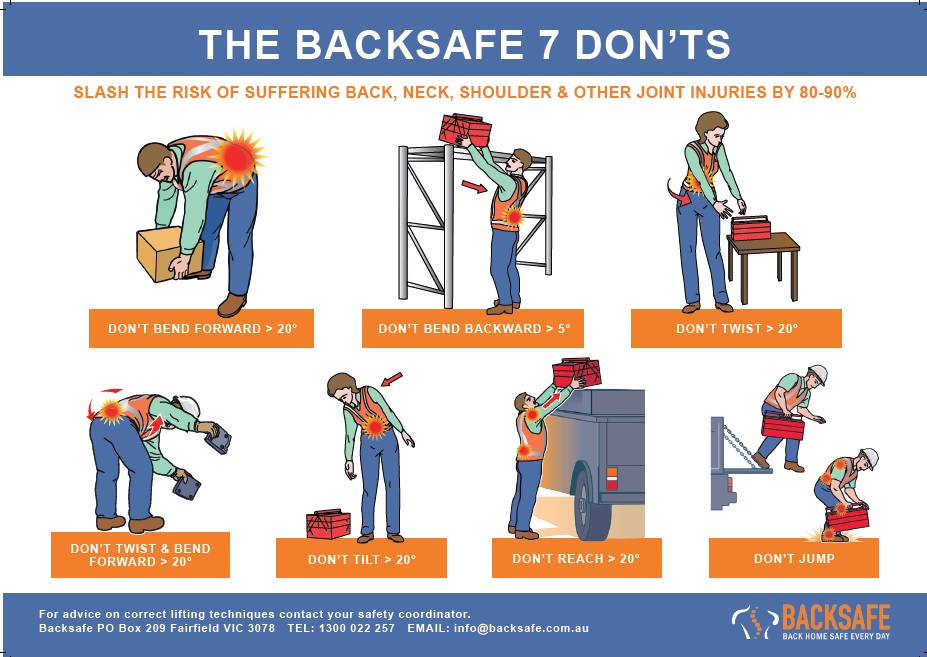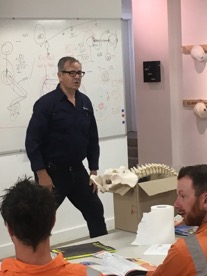Ergonomics is the application of scientific information concerning objects, systems and environment for human use. (Definition adopted by the International Ergonomics Association 2007). Ergonomics is commonly thought of as how companies design tasks and work areas to maximise the efficiency and quality of their employees’ work. However, ergonomics comes into everything which involves people. Ergonomics is essentially about “fitting work to people”.
Backsafe Ergonomic Assessments are a key part of what we do. For this reason, we are going to write a series of Blog articles that cover different working postures and give you some tips about how to work safely. This article is the first and it is about Standing and Sitting safely – sounds simple but creating poor habits can lead to musculoskeletal injuries (MSDs) which is something we all want to avoid.
Standing for extended periods can be very stressful to the spine and the other joints of the body. When you wake in the morning healthy discs are generally well hydrated containing up to 90% water. Throughout the day the downward pressure of gravity and your upper body weight dehydrates the discs by squeezing the water out – just like squeezing a sponge “dry”. In fact, you may find that you are a little bit shorter at the end of your day than the start of the day due to the discs compressing from this dehydrating process. This in turn may force pressure on to the spinal sections and the nerves causing pain and stiffness in the back and legs.
Here are some more Backsafe Posture Tips.
- When standing for long periods it is important that you maintain the natural curves of the spine and transfer some of the pressure from your back to other parts of your body.
- Putting your foot on a small step under a workbench and leaning forward slightly will exert force into the leg, giving your back a rest. This also helps maintain the natural curves of the spine.
- If you can lean on one arm occasionally whilst working this will also help.
- Sit down from time to time if possible and stretch out the back (mostly forward) to rehydrate the discs.
- Drinking plenty of water is also advised.
FORWARD SITTING POSTURE
- Mostly used for reading, writing, drawing, and working on small equipment.
- The knees are usually lower than the hips.
- The arms rest on a surface giving additional support to the back.
- Some chairs have the ability to tilt forward and may be found to increase comfort.
ERECT SITTING POSTURE
- It is important that you take the time to adjust your chair to correctly fit your body especially when sharing a job station with others.
- Refer to the Backsafe office set-up assessment
BACK LEANING POSTURE
- Usually preferred for phone work, conferencing, watching movies or TV and driving.
- Sit with knees higher than hips can be comfortable in “posterior” sitting.
- Armrests may be helpful here.
CORRECT WRIST POSITION
- When touch typing wrists should be straight.
- Prolonged downward or upward bending can lead to irritation, decreased nerve and blood supply, and eventually Carpal Tunnel Syndrome.
CONTACT US IF YOU WOULD LIKE TO BOOK A BACKSAFE ERGONOMIC ASSESSMENT T:1300 022 257




